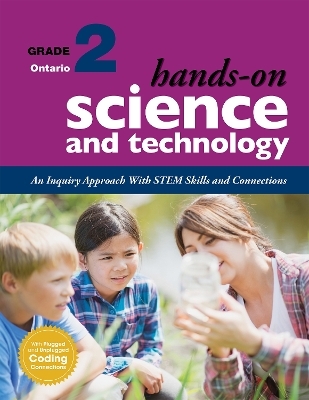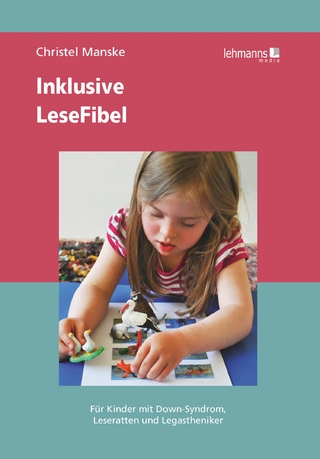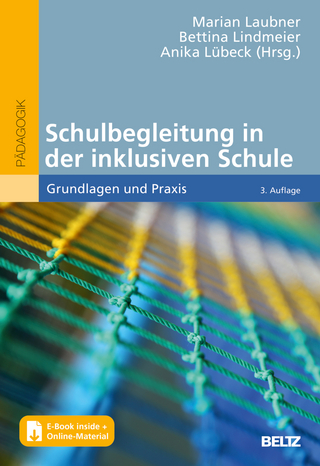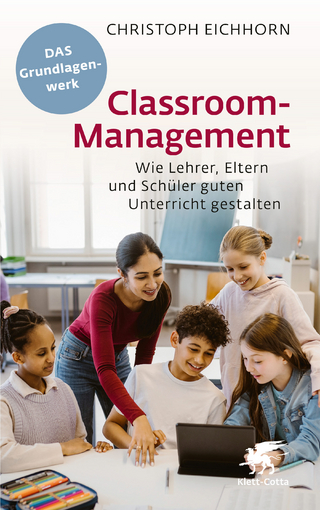
Hands-On Science and Technology for Ontario, Grade 2
Portage & Main Press (Verlag)
978-1-77492-067-1 (ISBN)
- Titel nicht im Sortiment
- Artikel merken
Hands-On Science and Technology for Ontario, Grade 2 is an easy-to-use resource for teaching the five strands of the Ontario science and technology (2022) curriculum:
STEM Skills and Connections
Life Systems: Growth and Changes in Animals
Matter and Energy: Properties of Liquids and Solids
Structures and Mechanisms: Simple Machines and Movement
Earth and Space Systems: Air and Water in the Environment
Hands-On Science and Technology for Ontario, Grade 2 encourages students’ natural curiosity about science and the world around them as they participate in hands-on activities and explore their environment. Using the inquiry approach, this comprehensive resource
fosters students’ understanding of STEM (science, technology, engineering, and mathematics) skills
makes coding and emerging technologies approachable for both teachers and students
emphasizes personalized learning using a four-part instructional process: activate, action, consolidate and debrief, enhance
relates science and technology to sustainability and our changing world, including society, the economy, and the environment
focuses on practical applications of the engineering design process as students work on solutions to real-life problems
builds understanding of Indigenous knowledge and perspectives specific to Ontario
explores contributions to science and technology by people with diverse lived experiences
Using proven Hands-On features, this book provides resources for both teachers and students including background information on the science topics; complete, easy-to-follow lesson plans; materials lists; and digital image banks and reproducibles (find download instructions in the Appendix of the book). Innovative elements developed specifically for the Ontario curriculum include the following:
plugged and unplugged coding activities in nearly every lesson
land-based learning activities
opportunities for students to use the scientific research process, scientific experimentation process, and engineering design process
a fully developed assessment plan to guide assessment for, as, and of learning
ideas and prompts for STEM Makerspace project
Jennifer E. Lawson, PhD, is the creator of the Hands-On books published by Portage & Main Press. As senior writer and editor for the series, she has contributed to more than 50 publications for teachers and students. Jennifer provides professional development workshops for educators locally, nationally, and virtually, and is a Workplace Wellness Advisor. Her most recent book is a collective effort called Teacher, Take Care: A Guide to Well-Being and Workplace Wellness for Educators. She is also one of the founders of Mission to Mexico, an organization that supports schools in some of the most impoverished communities in Puerto Vallarta. Throughout her extensive career in education, Jennifer has worked as a classroom teacher, resource and special education teacher, consultant, principal, university instructor, and school trustee. She lives with her family in Winnipeg, Manitoba. For over 20 years, Kellie Ierullo (she, her, hers) has been an educator with the Toronto District School Board including as a classroom teacher, special education teacher, and now as a teacher-librarian, technology chair and science/STEM lead educator. Kellie is passionate about helping teachers engage students through meaningful coding and STEM activities and encouraging students to move beyond navigating technology to creating it for themselves. Kellie lives in Woodbridge, Ontario with her family. Jennifer H. Manitowabi (she/her/hers) is an Ojibway educator and PhD student at Lakehead University. Throughout her career in education in both Canada and the US, she has worked as a bus driver, classroom teacher, principal, and education director. Jennifer encourages all teachers to incorporate Indigenous worldviews into their lessons and find opportunities to build relationships with the First Nations of Turtle Island. Jennifer is a member of Lac Seul First Nation, where she currently resides, and can often be found creating artwork that celebrates her culture.
Introduction to Hands-On Science and Technology for Ontario, Grade 2 1
Introduction to Hands-On Science and Technology 2
Program Introduction 2
The Inquiry Approach to Science and Technology 2
21st Century Teaching and Learning 3
The Goals of the Science and Technology Program 3
Hands-On Science and Technology Strands and Expectations 4
Hands-On Science and Technology Fundamental Concepts and Big Ideas 4
Hands-On Science and Technology Program Principles 5
Infusing Indigenous Perspectives 5
Cultural Connections 7
Land-Based Learning 7
Technology 7
Sustainability 7
Program Implementation 8
Program Resources 8
Classroom Environment 11
Planning Units—Timelines 12
Classroom Management 12
Classroom Safety 12
Scientific Inquiry Skills: Guidelines for Teachers 12
Observing 12
Questioning 13
Exploring 13
Classifying 13
Measuring 14
Communicating, Analyzing, and Interpreting 14
Predicting 15
Inferring 15
Inquiry Through Investigating and Experimenting 16
Inquiry Through Research 16
Online Considerations 17
Addressing Students’ Early Literacy Needs 17
Technological Problem Solving 17
Makerspace 18
The Hands-On Science and Technology Assessment Plan 20
Assessment for Learning 21
Assessment as Learning 21
Assessment of Learning 22
Performance Assessment 23
Portfolios 23
Evidence of Student Achievement Levels for Evaluation 24
Important Note to Teachers 24
References 25
Assessment Reproducibles 26
Achievement Chart for Science & Technology 41
Unit 1: Growth and Changes in Animals 43
Introduction 44
Unit Overview 48
Curriculum Correlation 49
Resources for Students 51
Websites and Videos 53
1 What Do We Know About Growth and Changes in Animals? 55
2 How Do Humans Grow and Change? 60
3 How Can Animals Be Grouped by Observable Characteristics? 64
4 What Are Some Other Ways to Group Animals? 70
5 How Do Animals Change Throughout Their Lives? 76
6 What More Can We Learn About Life Cycles? 82
7 What More Can We Learn About Mealworms? 88
8 How Can We Compare Adult Animals With Their Offspring? 93
9 How Do Animals Care for Their Offspring? 98
10 How Do Animals Meet Their Needs? 104
11 What Is an Animal Habitat? 108
12 How Do the Seasons Affect Animals? 112
13 How Do Humans Help and Harm Other Animals? 117
14 Inquiry Project: What More Do I Want to Know About How Animals Grow and Change? 123
Unit 2: Movement 127
Introduction 128
Unit Overview 131
Curriculum Correlation 132
Resources for Students 133
Websites and Online Videos 134
1 What Do We Want to Learn About Movement? 135
2 How Can We Describe the Position of an Object? 141
3 How Does My Position Change? 146
4 How Did That Object Move? 151
5 How Do Balls Move? 156
6 How Can We Move an Object? 161
7 How Does Friction Affect Moving Objects? 165
8 How Do Ramps Make Motion Easier? 171
9 How Can We Move Loads More Easily? 175
10 How Do Wheels and Axles Work Together? 180
11 How Will I Design and Build a Toy Truck? 184
12 What Can We Learn About Other Simple Machines? 187
13 Inquiry Project: What Else Do I Want to Know About Movement? 191
Unit 3: Properties of Liquids and Solids 195
Introduction 196
Unit Overview 199
Curriculum Correlation 200
Resources for Students 201
Websites and Online Videos 202
1 What Do I Know About Solids and Liquids? 203
2 What Are Solids and Liquids? 207
3 What Are Some More Properties of Liquids? 213
4 Can Liquids Mix and Stay Mixed? 220
5 What Happens to Sugar When It Is Mixed With a Liquid? 225
6 Do All Solids Dissolve in Liquids? 230
7 Which Materials Are Best for Absorbing Liquids? 235
8 How Can We Combine Solids and Liquids to Make Useful Products? 241
9 How Do We Stay Safe When Using Liquids and Solids? 246
10 How Does Water Change From a Solid to a Liquid and From a Liquid to a Solid? 251
11 Why Do Some Objects Float? 256
12 How Can I Design an Object That Floats? 262
13 Inquiry Project: What More Do I Want to Learn About Solids and Liquids? 268
Unit 4: Air and Water in the Environment 273
Introduction 274
Unit Overview 277
Curriculum Correlation 278
Resources for Students 279
Websites and Online Videos 281
1 What Do We Know About Air and Water? 284
2 What Are the Properties of Air? 289
3 How Does Air Move Objects? 294
4 How Do Wind-Powered Devices Work? 300
5 What Are the Effects of Changes in Air Temperature? 305
6 What Forms of Water Are Found on Earth? 310
7 How Does Water Move Through the Water Cycle? 314
8 What Factors Help Things to Dry More Quickly? 320
9 What Are Sources of Safe Drinking Water? 325
10 How Can We Use Water Wisely? 330
11 How Can We Keep Our Air and Water Clean? 335
12 Inquiry Project: What Else Do I Want to Learn About Air and Water? 340
References 344
Appendix: Image Banks 347
About the Contributors 358
| Erscheinungsdatum | 10.10.2023 |
|---|---|
| Co-Autor | Kellie Ierullo, Jennifer Manitowabi |
| Zusatzinfo | Illustrations |
| Sprache | englisch |
| Maße | 215 x 279 mm |
| Gewicht | 857 g |
| Themenwelt | Schulbuch / Wörterbuch ► Unterrichtsvorbereitung |
| Naturwissenschaften | |
| Sozialwissenschaften ► Pädagogik ► Schulpädagogik / Grundschule | |
| ISBN-10 | 1-77492-067-0 / 1774920670 |
| ISBN-13 | 978-1-77492-067-1 / 9781774920671 |
| Zustand | Neuware |
| Haben Sie eine Frage zum Produkt? |
aus dem Bereich


